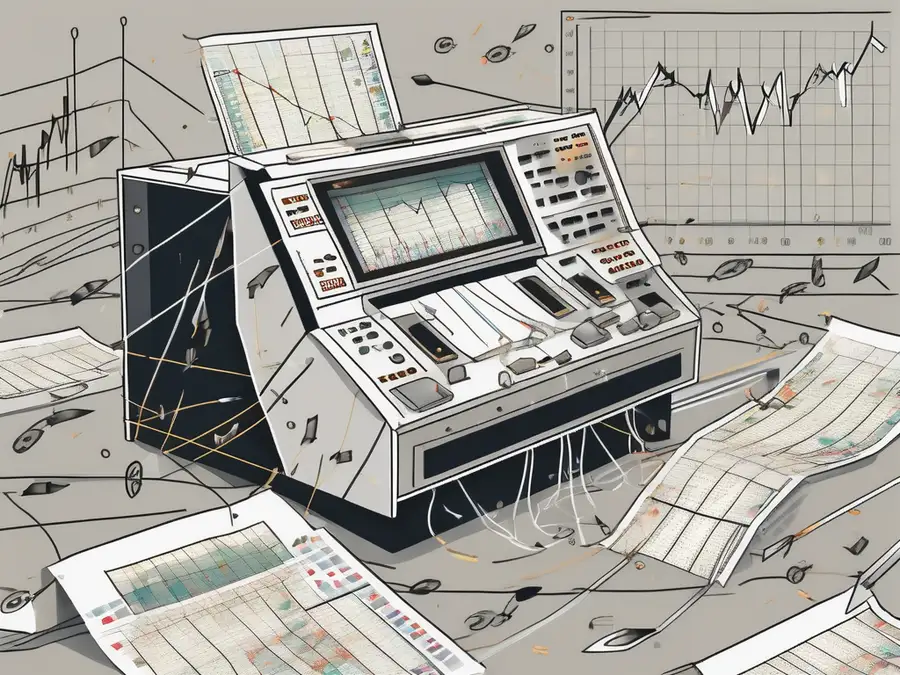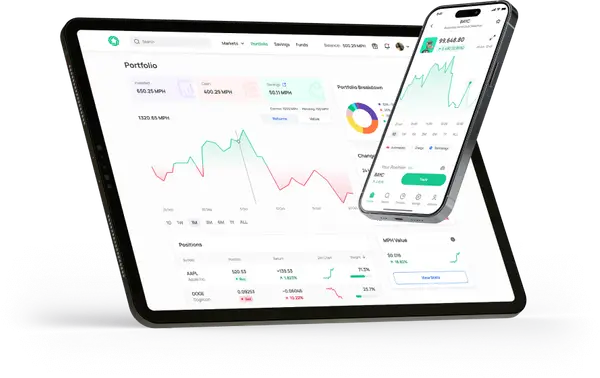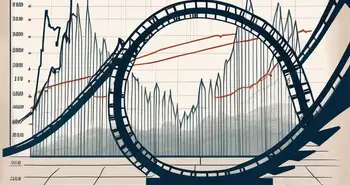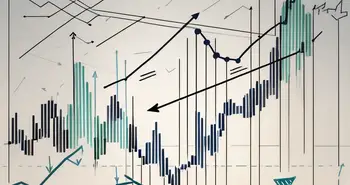What Does a Stock Quote Represent?

Did you know that the roots of stock quotes can be traced back to the buzzing coffeehouses of 17th century Amsterdam, which served as the epicenter of financial activity where traders gathered to exchange securities and post stock and commodity prices on the walls? This early form of spreading market information laid the foundation for what we know today as modern stock quotes.
In this comprehensive guide, we invite you on a journey through the complex world of stock quotes. We will explain the essence of stock prices and empower you with information to capitalize on their potential to guide strategic investment decisions. By the time you complete this article, you will have a comprehensive understanding of what stock quotes mean and how they can be your invaluable ally in the field of trading.
Understanding the Basics of Stock Quotes
Before delving into the specific components of a stock quote, let's first define what a stock quote actually is.
Definition of a Stock Quote:
A stock quote is a snapshot of a stock's current market value and trading activity. It is essentially a representation of the ongoing buying and selling of shares in a particular company.
Stock quotes are typically displayed in real-time and are essential for investors to make informed decisions about buying, selling, or holding shares. Without stock quotes, investors would be left in the dark, making blind investment choices.
In a simpler manner, think of a stock quote like checking the price tag on something you want to buy at a store. It tells you how much that item costs right now.
In the same way, a stock quote tells you how much one share of a company's stock costs at that moment. It's like a snapshot of the stock's value in the market.
When you see a stock quote, you'll usually see a few numbers:
- Last Price: The price at which the stock was last traded.
- Bid Price: The highest price a buyer is willing to pay for the stock.
- Ask Price: The lowest price a seller is willing to accept for the stock.
- Volume: How many shares of the stock were traded during a certain period (like the last day).
So, if you're interested in buying or selling stocks, you'd look at these numbers to make decisions, just like you'd check the price tag before buying something in a store.
Company: ABC Inc.
Last Price: $50.00
Bid Price: $49.95
Ask Price: $50.05
Volume: 100,000 shares
In this example:
- The last price is $50.00, meaning the most recent trade of ABC stock was at $50.00 per share.
- The bid price is $49.95, which is the highest price a buyer is currently willing to pay for one share of ABC stock.
- The ask price is $50.05, which is the lowest price a seller is currently willing to accept for one share of ABC stock.
- The volume is 100,000 shares, indicating that 100,000 shares of ABC stock were traded recently.
This is a much simplified example, but it gives you an overall idea of what information you can find in a stock quote.
Importance of Stock Quotes in Trading:
Stock quotes serve as valuable indicators of market activity and can provide insights into a company's financial health and performance. By regularly monitoring stock quotes, investors can spot trends and potentially identify lucrative investment opportunities.
For example, if the stock quote of a company has been consistently rising over a period, it might indicate that the company is experiencing growth and could be a good investment. Conversely, a declining stock quote might suggest financial difficulties or a lack of investor confidence in the company.
Furthermore, stock quotes are not just limited to individual stocks but also apply to various financial instruments such as exchange-traded funds (ETFs), options, and futures. Each of these instruments has its own unique set of stock quotes that provide valuable information to traders and investors.
It's important to note that stock quotes are influenced by a multitude of factors, including market demand, economic indicators, company performance, geopolitical events, and even investor sentiment. Analysts and traders often analyze these factors to predict future stock price movements and make informed trading decisions.
Moreover, stock quotes are not static and can fluctuate rapidly throughout the trading day due to market volatility and external influences. This dynamic nature of stock quotes underscores the importance of staying informed and continuously monitoring market trends to navigate the ever-changing landscape of the financial markets.
After understanding the significance of stock quotes, are you ready to transform your trading experience? Discover Morpher's advanced platform, featuring fractional trading and more. Join Morpher now and start shaping your investment future!

Components of a Stock Quote
Now that we've established the importance of stock quotes, let's explore the key components that make up a stock quote.
Ticker Symbol:
The ticker symbol is a unique combination of letters assigned to a publicly traded company. It serves as a shorthand way to identify the company in stock market transactions and is essential for finding stock quotes.
Trading Volume:
Trading volume refers to the number of shares being bought and sold in a specific period. It provides insights into market liquidity and investor interest in a particular stock. Higher trading volumes generally indicate more market activity and can impact the price and volatility of a stock.
Bid and Ask Prices:
In every stock market transaction, there are two primary prices involved: the bid price and the ask price. The bid price represents the highest price a buyer is willing to pay for a stock, while the ask price is the lowest price a seller is willing to accept. The difference between the bid and ask prices is known as the bid-ask spread and can indicate the liquidity of a stock.
Dividend Yield:
Dividend yield is the percentage of a stock's annual dividend payment relative to its current market price. It serves as an indicator of the income potential of a stock, particularly for investors focused on generating passive income from investments.
Price-Earnings Ratio (P/E Ratio):
The price-earnings ratio, also known as the P/E ratio, compares a company's stock price to its earnings per share (EPS). It helps investors assess whether a stock is overvalued or undervalued relative to its earnings potential. A higher P/E ratio may indicate that the market has higher expectations for future growth.

Now, let's delve deeper into the concept of trading volume. Trading volume not only provides insights into market liquidity and investor interest, but it also plays a crucial role in technical analysis. Analysts often use trading volume to confirm trends and patterns in stock price movements. For example, if a stock experiences a significant increase in trading volume while its price is rising, it may suggest strong buying interest and a potential continuation of the upward trend. On the other hand, a decrease in trading volume during a price decline could indicate a lack of conviction from investors and a possible reversal in the stock's direction.
In addition to bid and ask prices, there are other important factors to consider when assessing the liquidity of a stock. One such factor is the depth of the market, which refers to the number of shares available at various price levels. A stock with a deep market will have a large number of shares available for purchase or sale at different prices, providing more flexibility for investors. On the contrary, a stock with a shallow market may have limited liquidity, making it more difficult to execute trades without significantly impacting the stock's price.
When it comes to the price-earnings ratio (P/E ratio), it is important to note that different industries and sectors may have varying ranges of what is considered a “high” or “low” P/E ratio. For example, technology companies often have higher P/E ratios due to their potential for rapid growth, while utility companies may have lower P/E ratios due to their stable and predictable earnings. Therefore, it is crucial to compare a stock's P/E ratio to its industry peers to gain a better understanding of its valuation relative to the market.
Reading and Interpreting Stock Quotes
Now that you understand the components of a stock quote, let's dive into the process of reading and interpreting stock quotes.
How to Read a Stock Quote:
When reading a stock quote, start by identifying the ticker symbol for the company you're interested in. Then, review the bid and ask prices to understand the current market value. Pay attention to the trading volume to gauge the level of investor activity.
Additionally, consider the dividend yield if you're interested in income-generating stocks or the P/E ratio if you want to assess a company's valuation relative to its earnings.
Interpreting Changes in Stock Quotes:
Stock quotes are not static and can change rapidly throughout the trading day. Understanding how to interpret these changes can provide valuable insights.
A significant increase in trading volume, for example, could signify breaking news or market sentiment that is influencing investor behavior. Similarly, a substantial shift in bid and ask prices could indicate increased market volatility or significant buying or selling pressure.
As an expert with years of experience in the stock market, I can attest to the value of paying close attention to these changes and regularly monitoring stock quotes.
Online Platforms for Stock Quotes
If you're looking for convenient access to stock quotes, online platforms offer a wealth of information at your fingertips.
Benefits of Online Stock Quotes:
Online platforms provide real-time stock quotes, allowing you to stay up-to-date on market movements and make timely investment decisions. Many platforms also offer additional features such as customizable watchlists, historical data, and detailed financial information.
Reliable Online Platforms for Stock Quotes:
When it comes to choosing a reliable online platform for stock quotes, there are several options to consider. Some popular choices include Yahoo Finance, Google Finance, and Bloomberg. These platforms provide comprehensive market data and analysis tools to support your investment research.
FAQ
Q: What is a stock quote?
A: A stock quote is a snapshot of a stock's current market value and trading activity. It provides information on the price, trading volume, and other key indicators of a stock's performance.
Q: How can stock quotes be useful for investors?
A: Stock quotes are crucial for investors as they serve as indicators of market activity and provide insights into a company's financial health and performance. By monitoring stock quotes, investors can make informed decisions about buying, selling, or holding shares.
Q: Where can I find reliable online platforms for stock quotes?
A: There are several reliable online platforms for stock quotes, including Yahoo Finance, Google Finance, and Bloomberg. These platforms offer real-time market data, analysis tools, and additional features to support your investment research.
In conclusion, stock quotes represent much more than just numbers on a screen. They are windows into the dynamic world of stock market activity, offering valuable insights into companies' financial health and investor sentiment. By understanding the basics of stock quotes and regularly monitoring them, you'll be better equipped to navigate the world of investing and make more informed decisions. Remember, knowledge is power in the stock market, and stock quotes are an essential tool in your investment arsenal.
Ready to take your investing to the next level with the insights you've gained from understanding stock quotes? Look no further than Morpher, the revolutionary trading platform that leverages blockchain technology for a seamless, innovative trading experience. With Morpher, you can enjoy zero fees, infinite liquidity, and the flexibility of fractional investing across a diverse range of asset classes. Experience the safety and control of a non-custodial wallet, the potential of 10x leverage, and the unique opportunity to trade Virtual Futures. Sign Up and Get Your Free Sign Up Bonus today to transform the way you trade and invest.

Disclaimer: All investments involve risk, and the past performance of a security, industry, sector, market, financial product, trading strategy, or individual’s trading does not guarantee future results or returns. Investors are fully responsible for any investment decisions they make. Such decisions should be based solely on an evaluation of their financial circumstances, investment objectives, risk tolerance, and liquidity needs. This post does not constitute investment advice.

Painless trading for everyone
Hundreds of markets all in one place - Apple, Bitcoin, Gold, Watches, NFTs, Sneakers and so much more.

Painless trading for everyone
Hundreds of markets all in one place - Apple, Bitcoin, Gold, Watches, NFTs, Sneakers and so much more.








